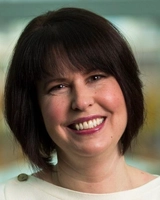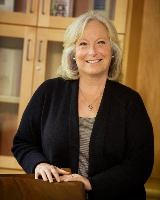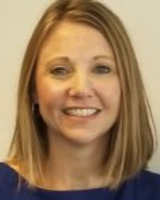Building a cohesive, multigenerational team in a high-growth company is essential for many hiring teams. During the recruiting process, initial assessments, collaboration, and communication is essential to finding the right candidate. Take a look at the questions and insights HR managers and top executives ask that support finding an ideal candidate fit for diverse teams across generations.
- Assessing Cross-Generational Collaboration
- Gauging Pronoun Sensitivity for Fit
- Understanding Mentor-Mentee Dynamics
- Revealing Traits Through Movie Preferences
- Evaluating Adaptability to Diverse Teams
- Probing Communication Style Adaptability
Assessing Cross-Generational Collaboration

Can you tell us about a time when you had to collaborate with team members from different generations to achieve a common goal?
This question influences hiring decisions by providing insight into a candidate’s interpersonal skills and ability to navigate complex team dynamics. Candidates who can demonstrate successful collaboration across generations are more likely to contribute to team cohesion and productivity. In contrast, candidates who exhibit rigid attitudes toward working with different generations may raise red flags regarding their fit within the organization’s culture.
Michelle Forstrom, HR Manager, BYU Library
Gauging Pronoun Sensitivity for Fit

The quickest way to check a candidate’s fit for a multigenerational workplace is to ask:
What is your preferred pronoun?
The response you get will immediately indicate their chances of success within your working environment. A green flag is a stated, emotionless answer. Red flags are responses such as negative tangents or putting the idea of pronouns down.
Jarir Mallah, Human Resources Manager, Ling App
Understanding Mentor-Mentee Dynamics

What are your expectations of mentors and of mentees?
In our experience, the people who best fit multigenerational teams are those who lean into the junior-senior dynamic.
When working with younger colleagues, they impart wisdom and guidance, and when working with older colleagues, they seek wisdom and guidance, both irrespective of official seniority. This way, the lived experience of older staff is respected, and younger staff are supported, reducing the probability of conflict.
By exploring their understanding of the mentor-mentee dynamic, they highlight their ability to productively work across age groups. Additionally, given the inherent value of mentorship, strong answers also indicate a commitment to learning and development, making this question a powerful quality-of-hire indicator in and of itself, and thus receives significant weight in the interview.
Chloe Yarwood, HR Manager, Test Partnership
Revealing Traits Through Movie Preferences

Questions like: What’s your favorite movie? can feel frivolous to candidates, but I use that particular line all the time: it really tells me a lot about the personality of the worker I’m interviewing.
And when it comes to assessing their fit within a multigenerational team, it’s even more valuable. That’s because workers are often hesitant to box themselves in during the assessment period. They tend to want to appear as everything all at once. But their recreational habits, in this case, movie preferences, reveal facets they’d rather not announce.
Someone drawn to watching a favorite childhood film repeatedly, for example, might do well with an older team, regardless of their age. They likely favor the status quo and prefer incremental change. A candidate drawn to intellectual thrillers, on the other hand, might better suit an innovative team with a focus on advancement.
Travis Hann, Partner, Pender & Howe
Evaluating Adaptability to Diverse Teams

One impactful question to assess a candidate’s fit within a multigenerational team for mid-market level organizations is:
How do you approach collaborating with colleagues who may have different communication styles, work preferences, or perspectives because of generational differences?
So, why is this question so important? This question allows the candidate to demonstrate their understanding of and adaptability to working in a diverse team environment. It also provides insights into their communication and interpersonal skills. It encourages them to reflect on their ability to bridge generational gaps and foster collaboration across different age groups, which is essential for success in today’s workforce.
Collaboration and group process skills are crucial for effectively working with multiple age groups in the workplace. In a multigenerational team, employees bring diverse perspectives, communication styles, and work preferences shaped by their generational experiences. By fostering collaboration and leveraging group process skills, team members can bridge these differences and capitalize on the unique strengths that each generation brings to the table.
One key aspect of collaboration is effective communication, which involves actively listening to others, expressing ideas clearly, and understanding different viewpoints. This skill is essential for navigating the diverse communication styles present in a multigenerational team. By fostering open and respectful communication channels, team members can overcome communication barriers and ensure that everyone feels heard and valued.
Additionally, group process skills, such as conflict resolution, decision-making, and consensus-building, are essential for navigating the dynamics of a multigenerational team. These skills enable team members to address conflict constructively, make informed decisions that consider diverse perspectives, and reach consensus on important issues.
By asking the question about collaboration skills, corporate HR teams can foster a collaborative and inclusive team environment where all members contribute their best ideas and work together towards shared goals.
Dianne Crampton, President, TIGERS Success Series
Probing Communication Style Adaptability

In mid-market organizations, where the synergy within multigenerational teams can be a pivotal factor for success, one question that has emerged as particularly impactful is:
Can you share an experience where you had to adapt your communication style to collaborate effectively with a team member from a different generation? What did you learn?
This question delves deep into a candidate’s adaptability, emotional intelligence, and ability to navigate the diverse communication preferences that define a multigenerational workforce. It’s not just about their ability to work with a range of age groups; it’s about understanding and valuing the unique perspectives and communication styles each generation brings to the table.
The responses we receive offer profound insights into the candidate’s interpersonal skills and their inclination towards fostering an inclusive work environment. Candidates who recount specific instances with reflective insights demonstrate a higher level of self-awareness and a genuine commitment to collaborative success across age divides.
Laurie Hyllberg, Vice President, Kinsa Group



